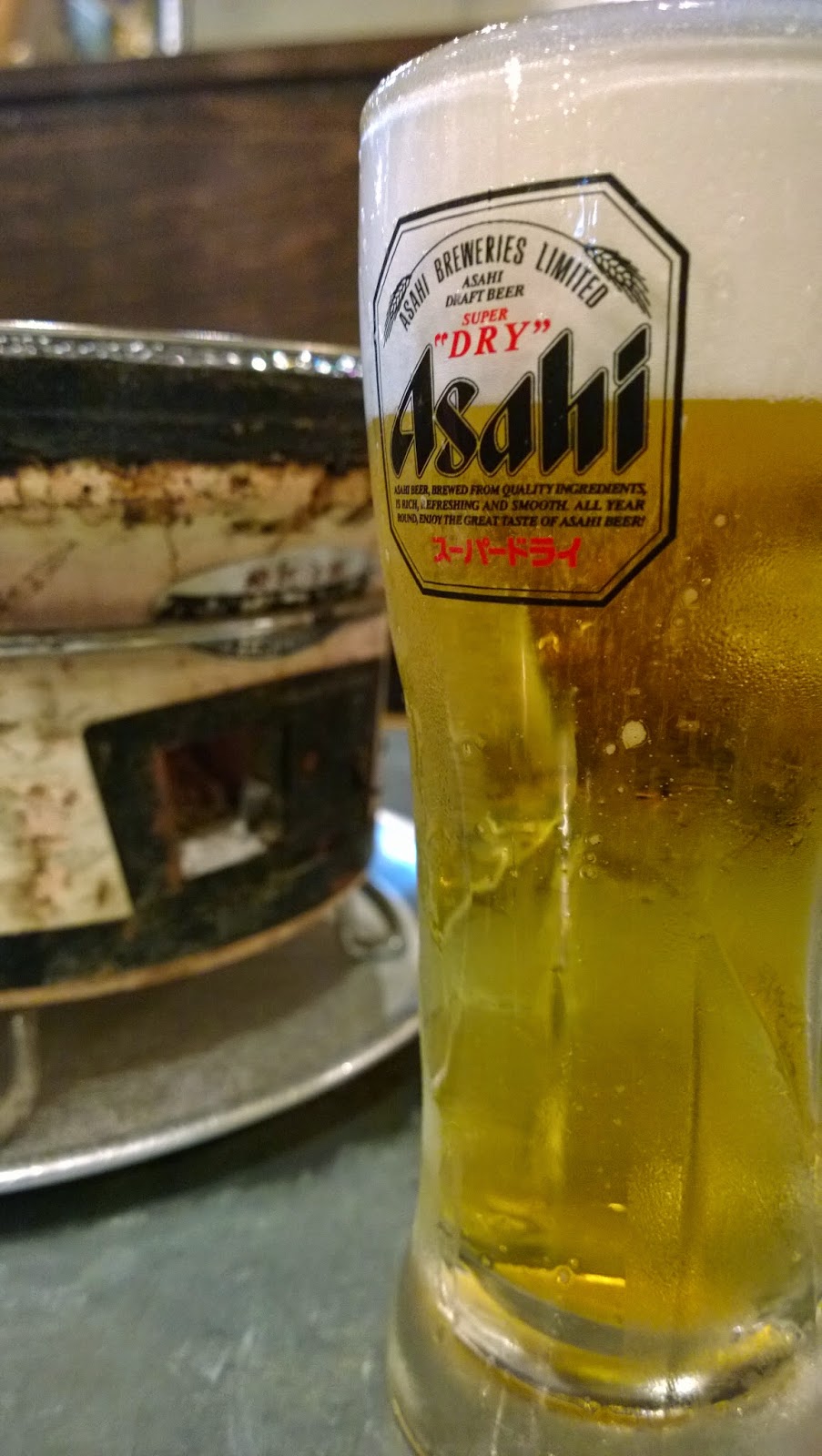Osaka is famous for being a food lover's city -- much more so than Tokyo although I am sure that statement will not be well received by my colleagues at the Head Office.
It is in Osaka where people use the term "kuidaore" or "eat oneself into ruin" or in more colloquial terms "eat till you drop".
My colleagues and friends in Osaka have told me that "if you want to eat an expensive, fancy meal go to Tokyo but for a delicious meal, go to Osaka".
After having been to both places many times, I lip-smackingly agree!
Even in terms of atmosphere, eating in Osaka is so much more easygoing, casual and fun.
At the centre of this Osakan foodie culture is the famous eating street called Dotonbori.
Situated in the Namba area and adjacent to the shopping arcades of Shinsaibashi and Ebisubashi, Dotonbori is a street lined with restaurants and food stalls.
You can eat practically any kind of Japanese food here from sushi and sashimi to wagyu, tempura ...
... to takoyaki, that iconic soul food of the city.
There are specialty places like crab restaurants, fugu or blowfish restaurants, gyoza restaurants, ramen restaurants ... you name your food craving and Dotonbori can satisfy each and every one.
You can eat, drink and make merry in Dotonbori. Everything is set in a such a crowded, raucous, colourful setting.
Certainly, there is nothing as informal, unpretentious and friendly as Dotonbori in Tokyo.
Even the izakayas in alleyways in Tokyo are not as comfortable or laid back ... populated as they are by office workers who seem to be stressed and uptight even as come together after office hours.
The action in Dotonbori begins as the day ends. So it was perfect timing that right after our last business meeting, we hied off to Dotonbori for dinner.
We couldn't quite make up our minds amidst the wide diversity of choices.
We finally ended up deciding on yakiniku and chose this very popular Dotonbori branch of
Showa Taishu Horumon. The name is actually quite interesting when translated to english.
The Japanese use names to refer to a particular period of time. Showa refers to the period from 1926 to 1989. Taishu means a large group of ordinary people. And horumon is the Japanese word for organ meats.
So if you literally translate the name of this restaurant, it means "organ meats for commoners, established in the Showa period".

Since it's for commoners the place is very unceremonious -- the wooden benches and cubicles and the wood panelled walls remind me of the atmosphere of an old, well-worn inn. It's not yet 6 pm so we are the first onaka ga suita (hungry) ones in the place.
You can choose an all-you-can-eat course but you have to finish ordering in 45 minutes.
Or you can go ala carte and choose from this dizzying selection of horumon or organ meats.
Thank goodness for an english menu to guide us and keep us from ordering a "heart crotch" whatever that is.
It seems that every organ and part of a pig or cow is represented -- intestines both small and big and dainty (I wonder what a dainty intestine is?), liver, kidneys, throat, cartilage, breast, heart, face, cheeks and yes, even a bull's penis can be ordered and grilled right at your table.
If you think we, as commoners, ate organ meats Showa Taishu Horumon, let me disabuse you of that thought. It was not high up on the cravings list for that dinner.
Happily, aside from horumon, the flip side of the menu listed the more normal cuts of beef and pork such as ribs, tongue, loin, belly and flank.
Since this is a yakiniku place, a small charcoal grill is on top of the table so you can cook your own meal. An exhaust fan conveniently located above the grill whisks the smoke away so you don't end up smelling like steak after you've just eaten one.
For an evening of yakiniku, a tall cold glass of Asahi super dry beer was just the thing to further whet the appetite.
My friend ordered raw beef or beef sashimi which she mixed with onions, minced garlic and a raw egg. We also ordered a plate of beef tongue with scallions.
In this case, the beef and the tongue were grilled to just medium rare while we let the pork belly cook a little longer till the fat was rendered and voila ... it was like eating the Japanese version of inihaw na liempo!
Who can eat all this meat without a cup of rice? We also asked for some Korean spicy paste or gochujang which came with some perilla leaves.
Perfect for wrapping around a just-grilled piece of juicy, tender meat!
We rolled out of Showa Taishu Horumon with full bellies -- ready to wade through the crowds lining Dotonbori and start our frenzied shopping spree at Shinsaibashi!
But first, a quick visit to this beloved and well known icon of Dotonbori -- Kuidaore Ningyo.
This clown beating a drum used to stand inside a large restaurant building along Dotonbori, which has since closed down.
I don't know why he's called Kuidaore when he is a rather thin figure but he continues to stand along the street, beckoning everyone to "eat till you are ruined".
And there are certainly many opportunities to do so along Dotonbori ... this unique, amazing, mouthwatering food street of Osaka.



























































